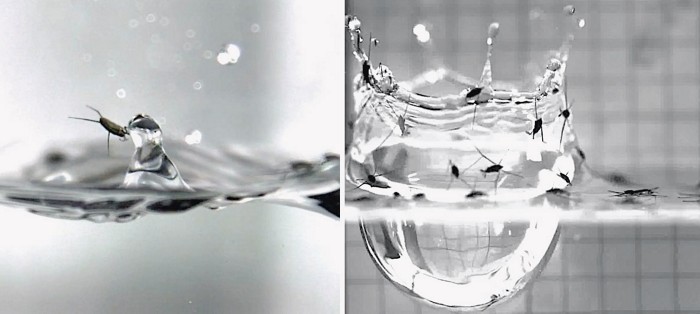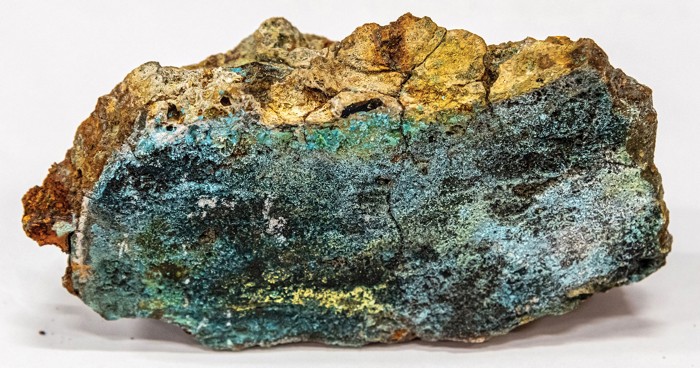Advertisement
Grab your lab coat. Let's get started
Welcome!
Welcome!
Create an account below to get 6 C&EN articles per month, receive newsletters and more - all free.
It seems this is your first time logging in online. Please enter the following information to continue.
As an ACS member you automatically get access to this site. All we need is few more details to create your reading experience.
Not you? Sign in with a different account.
Not you? Sign in with a different account.
ERROR 1
ERROR 1
ERROR 2
ERROR 2
ERROR 2
ERROR 2
ERROR 2
Password and Confirm password must match.
If you have an ACS member number, please enter it here so we can link this account to your membership. (optional)
ERROR 2
ACS values your privacy. By submitting your information, you are gaining access to C&EN and subscribing to our weekly newsletter. We use the information you provide to make your reading experience better, and we will never sell your data to third party members.
Water
Newscripts
Water-bombed insects and carrots that curl
by Chris Gorski
February 26, 2024
| A version of this story appeared in
Volume 102, Issue 6
Water striders’ wild ride

Media coverage can often be the push that helps research make a splash. Well, this week’s Newscripts is a little late to that particular party. Andrew Dickerson’s research into what happens to water striders when raindrops strike has already made many, many waves (Proc. Natl. Acad. Sci. U.S.A. 2024, DOI: 10.1073/pnas.2315667121).

Dickerson’s main research area focuses on the fluid mechanics of liquid drops. Even though this strider striking is a bit of a sideline, “it’s the kind of project that I enjoy the most,” he tells Newscripts.
It’s not the first time the mechanical engineer, who’s now at the University of Tennessee, Knoxville, has worked with insects. To put his latest paper in context, “we have to back up to 2010, when I started impacting flying mosquitoes with raindrops as a graduate student,” he says.
A few years later, Dickerson noticed large populations of the insects known as water striders in ponds near where he lived. Downpours, he thought, “must be just a wild ride for these things. How in the world do they survive?”
To study the striders’ ability to withstand a storm, Dickerson and the research team released 4 mm wide water drops from more than 1 m above a tank filled with water and stocked with insects. They tracked the action with a high-speed camera. The snapshots showed striders sandwiched between the large drops and the water’s surface. The researchers kept watch as simulated raindrops bull’s-eyed insects. The aerial assault’s succession of splashes, craters, and jets tossed the water striders around the tank. Some drops submerged some insects, while other striders surfed jets erupting from the center of collapsing craters—before jumping off.
Two developments moved the diverting research from nifty curiosity to publishable science. The first was the team’s mathematical description of the physical events that happened after drops struck the water surface—in particular, the growth and retraction of a second crater that forms after a larger initial impact cavity collapses, Dickerson says.
The second set of insights came when the researchers validated their results by replacing water striders with tiny Styrofoam balls. Those balls “are microplastics by definition. We didn’t initiate this study with the idea of ‘Hey, let’s study microplastics,’ ” he says. But the insights certainly transfer from the insects to the pest of microplastics.
A study based only on the balls, he says, could have “had the same output. But that wouldn’t be nearly as fun.”
Why cut carrots curl under stress

A research project involving a refrigerator stuffed with more than 30 kg of carrots may help engineers design more durable complex structures. Nguyen Vo-Bui, a mechanical engineering graduate student at the University of Bath, started a recent study by hauling all those carrots from the farmers’ market to his home to study how the orange vegetables curl (R. Soc. Open Sci. 2024, DOI: 10.1098/rsos.230420).
To get a consistent sample from a single source, Vo-Bui tells Newscripts, he had to ask “an astounded farmer to load his finest carrots into my suitcase.”

Carrots’ roughly cylindrical, connected core and outer layer form a decent proxy for a multilayer, complex material when cut lengthwise from crown to tip. Slicing them that way exposes both the core and the outside tissue, making them a good model to study, Vo-Bui says. “Instead of cutting expensive samples like bones and carbon composite, we can just do it with cheap, stable carrots.”
He set up a camera, clamped the sliced carrots, and watched how they deformed by curling—a stress-minimizing response, Vo-Bui says. He tracked that curling behavior over multiple days.
Vo-Bui admits that he briefly tired of carrots after consuming so many kilos in soups, cakes, and other recipes he shared with his roommates. The project also taught him quite a bit about the best way to store carrots, cut or not. They should be kept cold, in a moist environment, and ideally in an airtight container. Otherwise, refrigerator convection can drive a significant amount of curling, he says.
The study’s benefits aren’t just culinary. Vo-Bui’s PhD studies build from his insights into how carrots respond to stress and apply these concepts to the complex structures of ferroelectric ceramics.
Chris Gorski wrote this week’s column. Please send comments and suggestions to newscripts@acs.org.




Join the conversation
Contact the reporter
Submit a Letter to the Editor for publication
Engage with us on Twitter